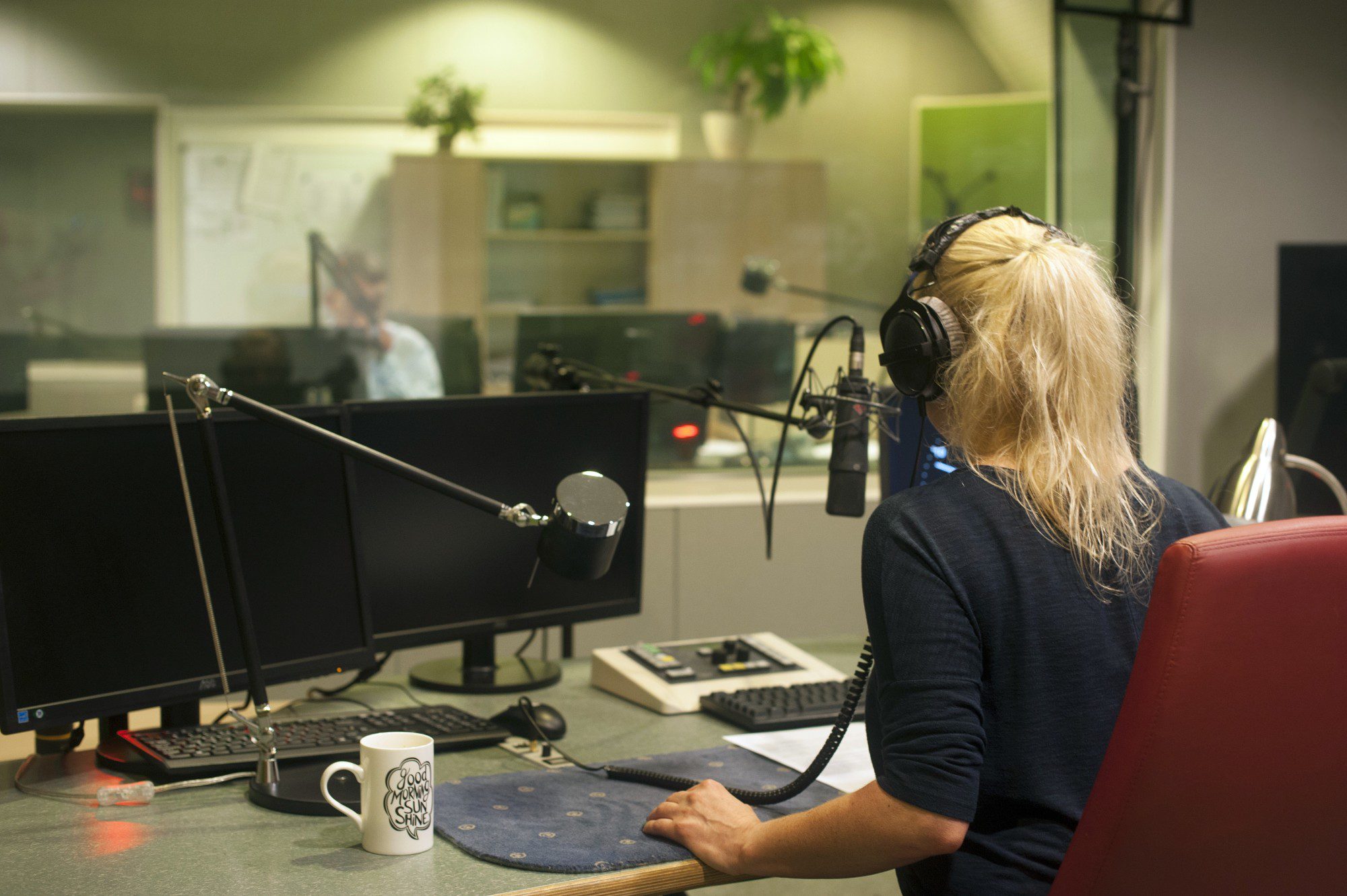Has anyone ever said to you, “Hey, you have a nice voice”?
It’s not something we really pay much attention to, especially when it’s our own.
But what if your voice was so good that it couldn’t be ignored?
What if it could earn you a decent living right from the comfort of your own home?
In this article you’ll discover how to be a voice-over artist, the training that’s involved, and how you can find a job doing it.
So if you’re looking to get your voice out there, let me show you how…
What is a Voice-Over Artist?
A voice-over artist is the performer that is never seen. The man (or woman) behind the curtain.
They deliver a narrative that captivates a target audience, and it can take on a variety of different forms.
It could be for an audiobook that is warm and comforting, igniting the imagination of the listener.
It can be for TV or radio advertisements, designed to capture attention and sell a product or service.
Or it could be that voice you hear waiting at the train station, or on the phone while you’re on hold.
While we all have a voice, not just anyone can be a voice-over artist. Some of the best come from a background in acting or radio, where speaking with flair comes naturally.
That’s not to say it cannot be learned and developed by yourself…
Finding Your Voice
To start off, you’ve got to be able to speak clearly and eloquently, so that your audience can at least hear and understand you easily. Many actors have speech coaches and practice reading scripts to create a particular tone, cadence, and quality that truly resonates with the listener.
For many it’ll depend on the job, whether it is to be formal and informative, to drive home a sale, or to bring a character to life, off the page and into the mind of the listener.
A good voice may be heard, but a great voice makes you pay attention. This is one of the many reasons why it is highly effective in advertising media.
How Can I Improve My Voice Acting?
Just as a painter develops their skills through different mediums and regular practice, training your voice in various ways is a great way to practice your speaking skills.
This could be in the form of reading aloud to others, presenting to groups of people, teaching a subject you’re passionate about, acting, or even reading stories to children.
There’s all sorts of different ways to use and develop your voice. So experiment, try things that make you uncomfortable, and your skills will no doubt improve in time.
The more adaptable you are to different scenarios, the more employable you’ll be.
How to Be a Voice-Over Artist
The good thing is that voice-over work no longer needs to be done in a studio, as many artists are now recording from home.
This makes the job far more flexible than it used to be, but it also means that it’ll take a little more time and effort from you.
Aside from a good voice, you’ll need to know a bit about using recording equipment and audio software. You’ve got to be organised, committed, and driven to find the work, complete the tasks and manage your schedule accordingly.
If you’re after some training you can find lots of videos on YouTube or courses on Udemy.
And if you want to get a good idea of what clients are looking for, check out this guide from Debbie Grattan.
Once you’re all prepared and practised, it’s time to get out there to find the work.
Voice-Over Casting
Most voice-over work is paid per project rather than at an hourly rate. And if you’re good enough, some employers will even provide you with ongoing and recurring jobs.
As a lot of voice-over work can be done from home, you can sign up to an online marketplace where you can apply for all sorts of jobs.
Some of these include:
- Voices / Voices 123 – both provide a wide range of different voice over jobs.
- Findaway Voices / ACX – for lots of audiobook and other narration jobs.
If accepted, you will be asked to audition for the role for which you can submit a video voice over or an audio file.
There are lots of advertising and talent agencies looking for great voice-over artists, and you can find out exactly what they’re looking for.
To give you a little more insight, Bunny Studios has an excellent article here on five tips for selecting voice-over talent, which is well worth a read.
Additional Voice-Over Tips
- Get yourself a good microphone that connects to your PC and download some free recording software like Audacity. Here’s six tips on how to make better audio recordings.
- Create a dedicated work space at home that is quiet and free from distractions.
- Contact companies such as film and TV studios, radio stations, and ad agencies directly to find out if they need any voice-over work. Here’s 12 tips on what people are looking for.
- Branch out on your voice skills and demonstrate the different areas you can work in, such as translating, transcribing, character voices, or singing jingles.
- Create a website and maintain an active social media presence to advertise your services, showcase your work, and quite possibly be headhunted!
The Last Word
Hopefully you now have a good idea about how to be a voice-over artist and what it takes to really make it.
Remember, it takes a lot more than simply having a nice voice. You’ve got to practice consistently, develop the surrounding skills, and always be professional in your approach.
There are many advantages to starting a career as a voice-over artist that you may not find in most jobs, from more flexibility to new and exciting opportunities.
So if you have the drive, the passion, and of course the voice, it’s time for you to speak up and be heard!
Head on over to Killer Spots Agency now where you can apply to work as a voice-over artist today!






